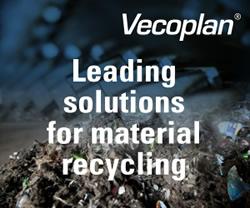Total capacity of small-scale PV and battery storage predicted to reach 32GW by 2030
Cornwall Insight Australia's projections show that based on the current trajectory of small-scale PV systems and associated battery storage assets, the National Electricity Market (NEM) is already on the path to a very high Distributed Energy Resources (DER) scenario seen in Energy Networks Australia's Open Energy Network Project position paper (OpEN Paper).
Cornwall Insight Australia's projections show that based on the current trajectory of small-scale PV systems and associated battery storage assets, the National Electricity Market (NEM) is already on the path to a very high Distributed Energy Resources (DER) scenario seen in Energy Networks Australia's Open Energy Network Project position paper (OpEN Paper).
Based on Cornwall Insight Australia's projections, the expected total installed capacity of small-scale solar PV by 2030 is 24.45GW*.
Further projections show the expected installed capacity for battery storage reach 7.4GW over the next decade (assuming each battery is at least 6kW).
This brings the total high-level DER estimate to ~32GW of small-scale PV and DER battery storage.
Ben Cerini, Principal Consultant at Cornwall Insight Australia, said:
"Over the last month, we have seen several reports by ARENA, AEMC and Energy Networks Australia that seek to establish the best way forward for integrating DER into the NEM to ensure that DERs are optimised, actively utilised and incorporated at least cost.
"However, even our conservative projections showing the total capacity of small-scale PV and DER battery storage reaching ~32GW by 2030 suggests that Australia is well on its way to achieving the highest DER integration scenario.
"Interestingly, the recommendation in the OpEN Paper that there is no rush to establish a distribution level market on the basis that only under a very high DER uptake scenario would the establishment of a new distribution management framework make economic sense, appears to be contrary to the direction of the market now.
"As we have seen with the transmission network, the market is changing at an accelerated rate. By waiting to see how the market evolves for DERs and trying to ensure that consumers do not incur unnecessary costs, we may in our conservatism, be doing just that.
"Creating a new distribution system operator (DSO) model will take significant time to develop and adopt, and if we don't begin early, we may risk costing consumers in the long term."
* Calculations were based on the average PV system being ~4.5kw. Assumptions also assume a fall in monthly PV installations between 50-75% over the next 12-18 months.
**Calculations were based on installations of ~1GW a year by 2030. This was based on Clean Energy Regulator (CER) assumptions which suggest that their battery storage figures represent ~30% of battery storage installations.
Featured Product

